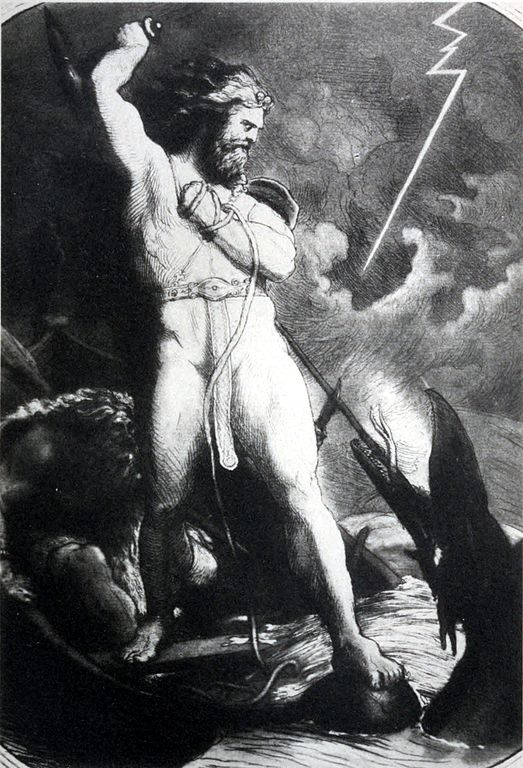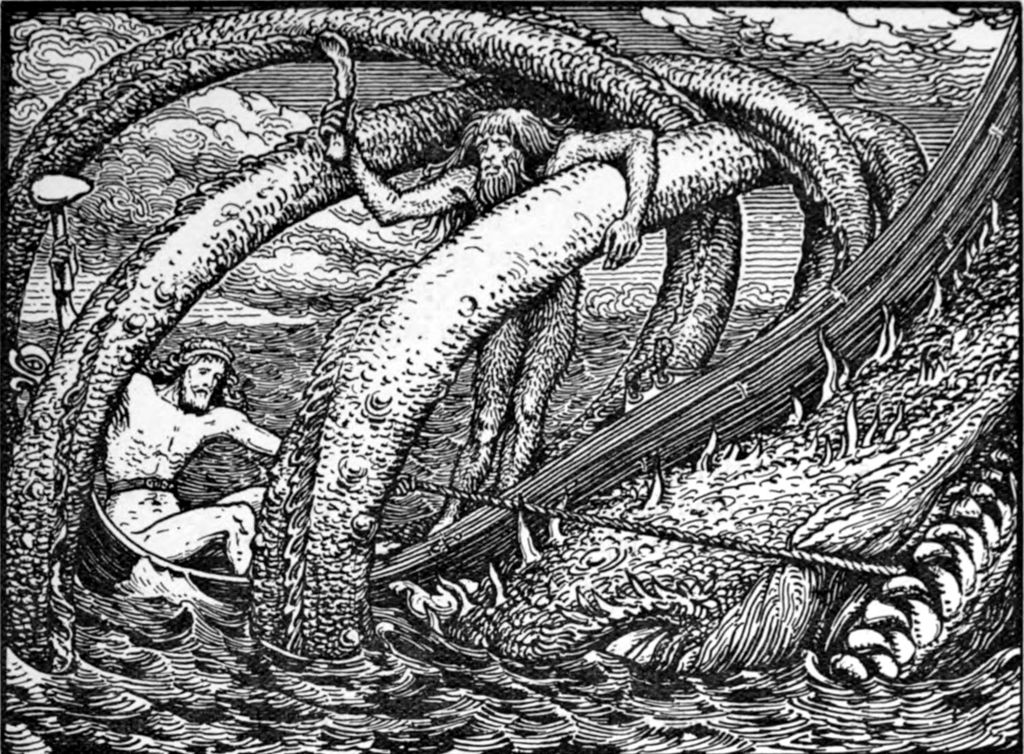Hymir , father of the god of war Týr, was a wise giant from Jotunheim in Old Norse mythology and the keeper of an enormous magic cauldron that Thor and Týr wished to borrow as a kettle for brewing beer. In the poem Hymiskviða,
Who Is Hymir?
Hymir is a jötunn (a giant from Jotunheim). He is described as wise and having an exceptionally hard head. Hymir keeps a magic cauldron that is a mile deep and is a huntsman with a dislike for guests.
The poem Hymiskviða (The Lay of Hymir) from the Poetic Edda mentions the giant Hymir is the father of the god of war, Týr, and has a grandmother with 900 heads.
Is Hymir A Norse god?
There is no evidence of Hymir being a Norse god.
However, he is the father of the god Týr, the deity of war of the Æsir.
Attestations in Old Norse Literature
Hymiskviða and Gylfaginning attestations
Hymiskviða (or Lay of Hymir) is a poem taken from the Poetic Edda and tells a story about Hymir lending his magical mile-deep cauldron to Thor (or þorr) and Týr.
Thor wants to brew beer in it as part of a feast that the Æsir (the pantheon of the Norse gods) are holding for the jötunn Ægir (personification of the oceans and husband of the sea goddess Rán) in Asgard.
“East of Elivagar”
Stanza 5 states (translations by Henry Adams Bellows, translator of the Poetic Edda for The American-Scandinavian Foundation):
There dwells to the east | of Elivagar
Hymir the wise | at the end of heaven;
A kettle my father | fierce doth own,
A mighty vessel | a mile in depth.
“Full Nine Hundred Heads She Had”
Stanzas 8 and 9 give us information about Hymir’s 900-headed grandmother (his “grandam”) and wife (Týr is her son) and what Hymir is like as a host:
The youth found his grandam, | that greatly he loathed,
And full nine hundred | heads she had;
But the other fair | with gold came forth,
And the bright-browed one | brought beer to her son.”“Kinsman of giants, | beneath the kettle
Will I set ye both, | ye heroes bold;
For many a time | my dear-loved mate
To guests is wrathful | and grim of mind.
“The Fellow’s Chin-Forest”
Stanza 10 tells us that he was a hunter and lived in a frozen land:
Late to his home | the misshapen Hymir,
The giant harsh, | from his hunting came;
The icicles rattled | as in he came,
For the fellow’s chin-forest | frozen was.
Hymir then shatters a beam with his gaze and breaks all his cauldrons except for the magic one. Thor seems unperturbed as he proceeds to eat two oxen on his own.
Thor and Hymir’s Fishing expedition
Thor and Hymir go out on a fishing expedition. Although described as “ape-worthy” (or a fool), Hymir lands two whales. Thor baits his hook with an ox head and catches the Midgard serpent known as Jörmungandr (“The girdler of all | the earth beneath”).
The next part is missing from Bellow’s translation. However, in Snorri Sturluson’s (Icelandic poet and historian) version, the Gylfaginning in the Prose Edda, Hymir cuts the fishing line from the gunwale, causing Thor to slam his feet through the bottom of the boat in anger.
In both versions, the venomous serpent escapes, destined to kill, and be killed by Thor during Ragnarök.

“Smite The Skull of Hymir”
Back at Hymir’s hall afterward, Hymir announces he will call “truly strong” the person capable of smashing an enchanted drinking vessel, “the cup.”
Thor attempts to break it by throwing it at a pillar – the pillar shatters, but the cup remains whole. Hymir’s wife then tells Thor to throw it at Hymir’s head instead:
Smite the skull of Hymir, | heavy with food,
For harder it is | than ever was glass.The goats’ mighty ruler | then rose on his knee,
And with all the strength | of a god he struck;
Whole was the fellow’s | helmet-stem,
But shattered the wine-cup | rounded was.
Thor Defeats Hymir
And so, Thor won the challenge. However, Hymir had not finished. He again issued a challenge saying that he who lifted the cauldron could take it. Týr fails twice to move it, but Thor succeeds.
The next morning, they left with the kettle, but Hymir and other giants chased them. Thor throws the cauldron off his back and uses Mjölnir, his magic hammer, to defeat them.
Related Relics

Christopher R. Fee, a medievalist and Professor of English at Gettysburg College, believes part of the ancient Gosforth Cross shows the fishing scene from Hymiskviða and Gylfaginning. He describes it in his book Gods, Heroes, & Kings: The Battle for Mythic Britain.

